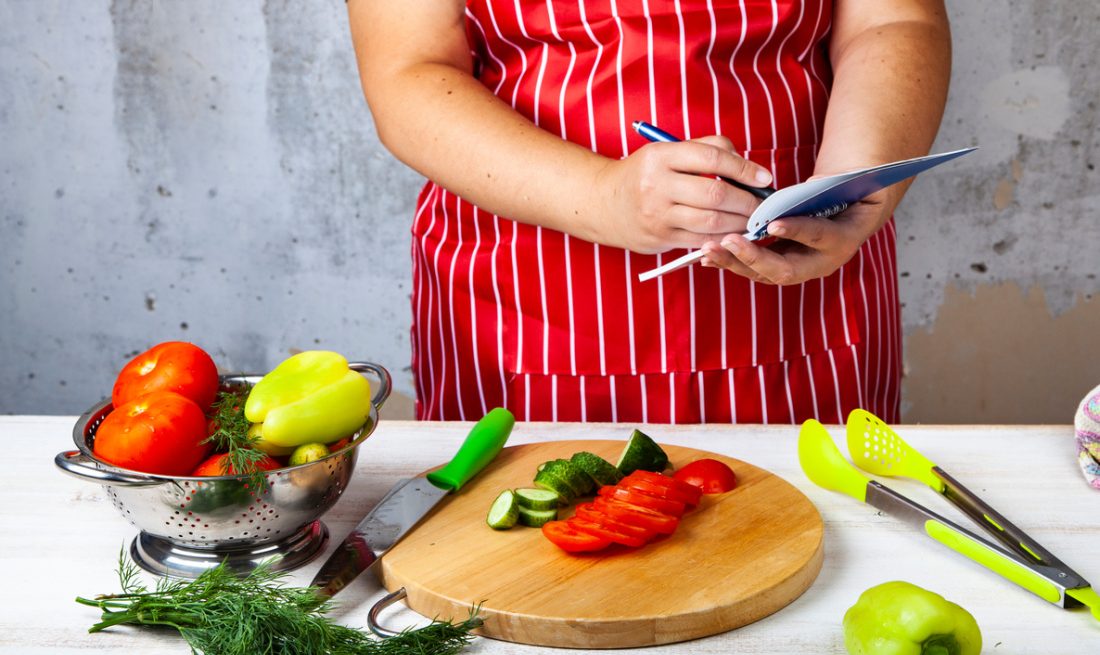Why Recipe Writing Is Pivotal for Professional Kitchens
5 Min Read By Chef Gabe Ross
If you want to make money selling food, you need good recipes.
A professional kitchen’s main responsibility is to turn out a consistent, quality product so whether you’re working in a restaurant, a manufacturing facility or any other food preparation business, if you can’t turn out a quality, consistent product, you are unlikely to have a successful business.
The recipe is the code you follow to produce that result. If you write bad code, you end up with a buggy program that doesn’t work properly, and food is the same way. If you record a recipe and it’s not a high-quality recipe, then you may get good results as long as the person who’s executing that recipe has the knowledge to do that, but you then have to show that recipe to somebody else. They’re going to run that code and execute that recipe in a way that doesn’t yield the same results because there’s not enough information.
Without a high-quality recipe, it’s very difficult to get high-quality results. Without recipes, you’re relying on institutional memory, and institutional memory without any documentation is embedded in the people that work in the kitchen — and people leave kitchens all the time. There’s high turnover in our industry so you can’t sync all of your institutional memory into your personnel and expect to continue running the business. You have to document.
What Makes a Good Recipe?
Completeness: A good recipe is going to have all the parts that you need for your operation. If you’re in a manufacturing facility, you might not need a picture of the final product in your recipe, but if you’re working in a fine dining or fast casual restaurant, you need a picture of the final product so that the people making that food know what it’s supposed to look like.
A consistent format makes it easier to write recipes. If you sit down and you have a certain list of things that you need to include in your recipe, it’s easy to hit all those points and make sure that the recipe is complete. Consistent formats also help the people who are reading the recipes so both the production of the recipe and the execution of the recipe depend on the consistent format.
It’s hard to read a recipe that comes to you when all the parts are in different places than you’re used to. Any structure or format for information is going to speed up the process as well. It’s like putting away your laundry: You know which drawer your socks or pants go in. You don’t have to go looking each time. If you’re writing recipes or executing recipes and you know where to look for the things that you need, it’s faster. You don’t waste time hunting, you just do the job.
In general, there are parts of a recipe that everybody needs:
- You have to have ingredients, quantities and units of measurement. Recipes without quantities and units are guidelines and they don’t yield consistent, quality results. You also need to have specific names for things. It’s fine to leave it open to whatever’s available, seasonal or on-hand but in that case, it’s always a good idea to be as specific as possible. Say, “In spring use ramps, in summer use leaks, in the fall use onions,” to offer alternatives. You’re leaving a lot up to interpretation if you don’t.
- A recipe should definitely contain specific directions. Many professional cooks think that if you don’t know how to do it, you shouldn’t be doing it. If I write dice the onions and sauté them without any more details, an experienced cook will probably be able to execute that, but in every kitchen, there are going to be different criteria. What’s a diced onion? How big? Does sauté mean until they turn brown or cooking gently? Are we seasoning? What kind of fat are we using? What kind of pan are we using? The more details you provide, the easier it is to get good results, which is the goal of running a food business.
- A recipe should have a yield associated with it, and this is a big one that people skip over all the time. If you think it’s a little bit different every time, it’s probably because the recipe isn’t written properly and people didn’t use the same quantity of ingredients and steps. If your recipe is written well, it should be pretty much the same yield every time. You can’t actually tell anyone how much to prep unless you know what the recipe yields.
The yield is also really important for costing. If you want to know how much it costs you to put that recipe on the plate or in the box, you need to know what those recipes yield. How are you going to make money if you don’t know what food costs you to produce, and how are you going to know what the food costs you to produce if you don’t have a yield on your recipe?
A recipe is like any other tool in the kitchen. I like to compare it to a knife. A dull knife is going to slow you down and frustrate you and a poorly written recipe is the same. If you sharpen that knife, it suddenly becomes a powerful tool in the kitchen. It speeds up your workflow, you get better results, everything looks better, everything is going to taste better, and you feel better using it. A recipe is the same way. If you sharpen up your recipes and you make sure that you have all the pieces mentioned, it’s going to speed up your workflow and make it easier to get good results.
What you need from a recipe depends on the type of kitchen or business that you’re in and the people you’re working with. Are you working with very experienced cooks who are going to be able to interpret your two-word instructions and make the food, or are you working with young cooks who don’t have as much experience and need a lot more guidance?
Once you’ve decided what you need to make that code work in that environment, make a checklist, go through each recipe and make sure that you have every piece in place. While you’re doing that, clean them up and put them in a place where they’re going to be most useful.
If you want to change something, you want to do so quickly and easily. One of the worst things that you can do is have an out-of-date recipe. If you have a recipe documented somewhere and you’ve changed three of four things but never updated the documentation, then the next person to make that recipe isn’t making the right food anymore. Having a system for storing your recipes that’s easy to update is really important because a recipe is a living thing, you’re always adjusting it.
It’s really important to be able to use recipes because that’s what recipes are for. It’s not enough to create a bunch of docs in a cloud somewhere. They don’t go in a file cabinet; they go in the kitchen.


